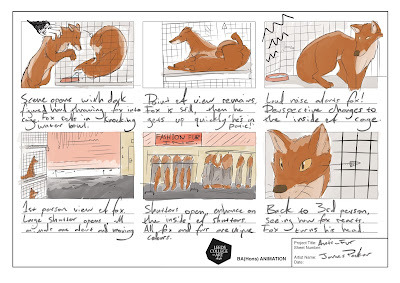Weekly Research
Character research and anti-fur campaign reference images
Slender red fox, white underbelly and muzzle, long bushy tail, brown paws, brown collar (formerly)
This character is a good model for basing our animation from, because his design is quite broad and can be adapted to easily for everyone in the group. Although our styles of drawing are very different, we can use this to our advantage by transforming the animations process throughout based from Tod, a generic male fox design.
Disney concept art is a great reference because is offers so many new elements for character expression and movement, in my segment I will be basing my character drawings for each frame with these body layouts. I am not confident in designing a fox character without good reference because of less experience drawing four legged animals so Disney is perfect for representation of character models, and also amazing at creating readable expressions on an animal.
Animal rights campaigners protest as fur comes back into fashion
The biggest auction of furs ever seen in the industry has taken place in Helsinki, when dealers and designers, vying for 11 million mink pelts, two million fox and one million assorted wild animal furs. Prices are expected to reach record levels...
"I remember when Peta released its first iconic 'I'd rather go naked than wear fur' campaign in the early 1990s – back when few people had ever seen a video or even a photograph of how horribly animals die for fur. The impact was huge. Almost overnight, wearing fur became unfashionable and designers couldn't wait to shout about how they were fur-free and fabulous. Retailers such as Selfridges and Liberty brought in strict no-fur policies.
As a group we decided the best way to communicate about the anti-fur awareness campaign was to include a bloody fur coat. This concept was made popular as a hard-hitting poster, originally issued by the environmental campaigning group Greenpeace in 1984, in protest against the fur trade. This iconic poster made such an impact that that it is mostly always recognised, especially in the fashion industry. This image would be used in our animation as a fur coat hanging up and dripping blood, in our last scene before dramatic quote or question sentence.
























